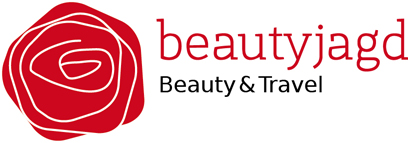This is a translation of my German blogpost Hinter den Beauty-Kulissen… ProTec Ingredia Proudly Presents: Meine Tipps für Indie Beauty-Marken. Enjoy!
In cooperation with ProTec Ingredia GmbH // A few years ago, an American indie beauty brand completely disrupted the cosmetics market: The products were packaged in minimalistic glass bottles and came with a very affordable price tag. Each face care product focused on a specific active, allowing customers to tweak their skincare routine with ingredients such as AHA, vitamin C or niacinamide. The brand quickly became an international bestseller. Can you guess who I’m talking about? That’s right, it‘s The Ordinary. The Ordinary’s brand concept was so successful that a few years ago, Estée Lauder group acquired a majority stake in the brand. So technically speaking, The Ordinary is no longer an independent brand. In this chapter of my Beauty Soap, I’ll be talking about all things indie beauty, highlighting some of the most interesting disruptive product launches of the last years and sharing my tips for indie brands. Read on!
What indie beauty is
I’ve been in love with indie brands ever since I started writing about beauty, and not just because I like to support young and smaller companies. Indie brands are usually close to emerging trends. Often they communicate with their customers on social media so they recognise changing consumer needs much quicker than some of the larger cosmetics groups. Because indie brands are often pioneers, they influence the entire cosmetics market. Take The Ordinary as an example: Today, every drugstore carries a wide range of ingredients-focused skincare that was inspired by The Ordinary. And this is a global phenomenon.
The term “indie beauty” comes from the word “independent”: Indie brands are led by their founders and usually have a special mission – they might focus on an underserved customer group or a specific ingredient. Transparency and authenticity play a key role for indie brands and they often tell their community about their success or misfortunes on social media. Indie brands are not necessarily young and/or new on the market, by the way. Many family-owned traditional beauty companies have a flexible structure or are led by the next generation, and essentially act like innovative indie brands.
How indie brands are influencing the cosmetics industry
Indie beauty brands do not just develop new products or product categories. They also explore new ways to lead a company or try out new strategies for communication, marketing and distribution. Here are a few examples – after all, The Ordinary wasn’t the only beauty brand to have changed the cosmetics industry.
- Organic beauty and sustainability: The German and European organic beauty pio-neers have been using naturally-derived ingredients in their products for decades so they are well-established on the market. French brand Lamazuna, for example, laun-ched its first solid cosmetics in 2010. A decade ago, brands like RMS Beauty and Ilia Beauty stirred up the organic makeup category. And I am very certain that there would be no baking soda deodorant creams in drugstores today without the big success of indie brands such as Soapwalla or Wolkenseifen.
- More diversity: Niche brands are also ensuring that the cosmetics market is beco-ming more diverse, although there is still a lot of room for improvement here. Manu-facturers of mineral foundations have been offering foundations for all skin tones for many years and today, many larger cosmetics brands do so as well. And drugstores and perfumeries are finally offering hair care for curly and textured hair, courtesy of pioneers such as UK brand Bouclème or German natural brand Afrolocke. This has also made the Co-Wash concept (washing your hair with conditioner) more widely known in Germany.
- New distribution models: Brands like Beauty Pie from the UK or Uncorrupted Beauty in Germany have revamped the cosmetics shopping club model and offer their members luxury products for a lower price.
My tips for indie beauty brands
The news is full of successful indie brands. However, it’s not easy for a new brand to survive in such a highly saturated market. You need the right kind of financial and staff setup, of course, but other aspects are also important. Here are some of the tips that I often share in my brand consultations.
- Know your market: If you know your market and competitors you can more easily estimate how innovative and new your brand/product idea actually is. Doing market research on the Internet, on social media and in-person at trade fairs can be very helpful. You should also try and track the major trends in the market even if they’re not directly relevant for your own marketing.
- You’d think this is obvious but frequently, a particular issue is overlooked: At least one person in the company should be enthusiastic about beauty to better understand what using cosmetics is all about. This will result in better and more interesting product development and will make marketing more exciting.
- Define your goals: You should decide what you want to do with your brand right from the start because this will also impact your marketing strategy: Grow as fast as possible and then sell off the brand? Or focus the brand’s activities on a specific au-thentic product philosophy to achieve organic growth?
- Who are your customers and where do they spend their time? This is a crucial aspect to consider not just whilst developing a brand concept and marketing strategy, but also when deciding on the distribution channel. You also need to be realistic: Distribution is never free and can require a hefty investment which should be factored into the business plan from the beginning.
- Transparency protects from shitstorms: For young indie brands in particular authen-ticity is crucial. You can achieve this by open and honest communication but also through sustainable and transparent sourcing of ingredients and packaging.
- Indie brands have a wonderful opportunity to network with each other, for example through collaborations that increase the reach of both brands. Why shouldn’t a ma-nufacturer of nail polishes and a fragrance company cooperate and launch a product or product collection together?
- In the US there is even a magazine for indie brands. Online magazine Beauty Inde-pendent reports on the news and trends affecting independent and smaller beauty companies.
Exciting ingredients for indie beauty
Before I leave you I’d like to introduce a few active ingredients that are a great match for indie beauty:
- Retinol trend: NovoRetin™ from Mibelle Biochemistry is a plant-based retinol alter-native for beauty products that focus on active ingredients.
- Skin barrier trend: AvenaPLex from Oat Cosmetics supports the skin barrier with na-tural ceramides and soothes the skin.
- Biotechnology trend: Idaskin from Codif is manufactured with blue biotechnology which helps to conserve natural resources. It strengthens the skin’s defensive mechanism.
- Upcycling beauty trend: CALMandrin™ from Mibelle Biochemistry tackles inflamma-ging (a hybrid word: inflammation/ageing) and is manufactured from tangerine peels left over from perfume production.
Trade customers can order the ingredients of Mibelle Biochemistry, Codif and Oat Cosmetics from German distributor ProTec Ingredia. Indie brands are very welcome!
In the next chapter of my Beauty Soap, I’ll be featuring a new active ingredient that I was introduced to during a recent trip. Stay tuned!


